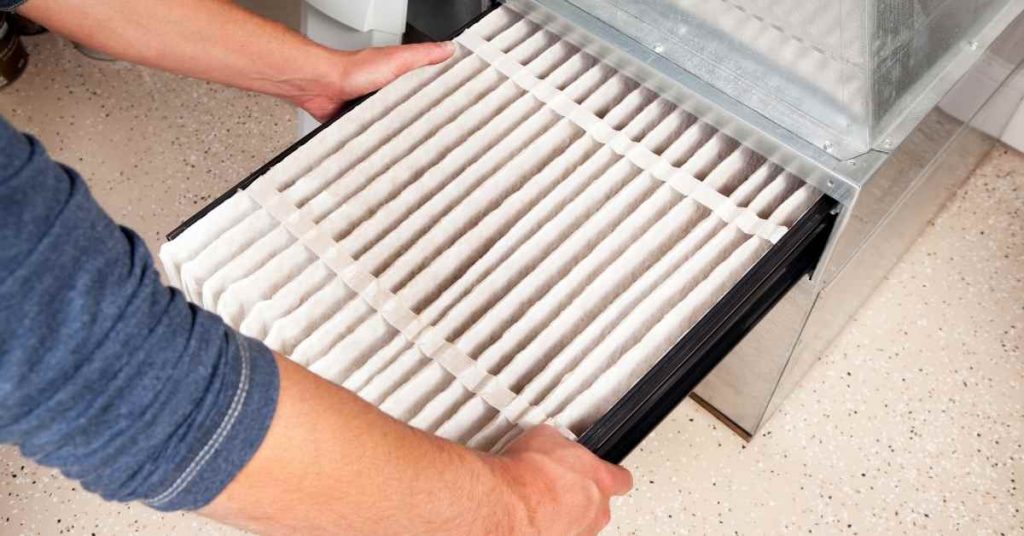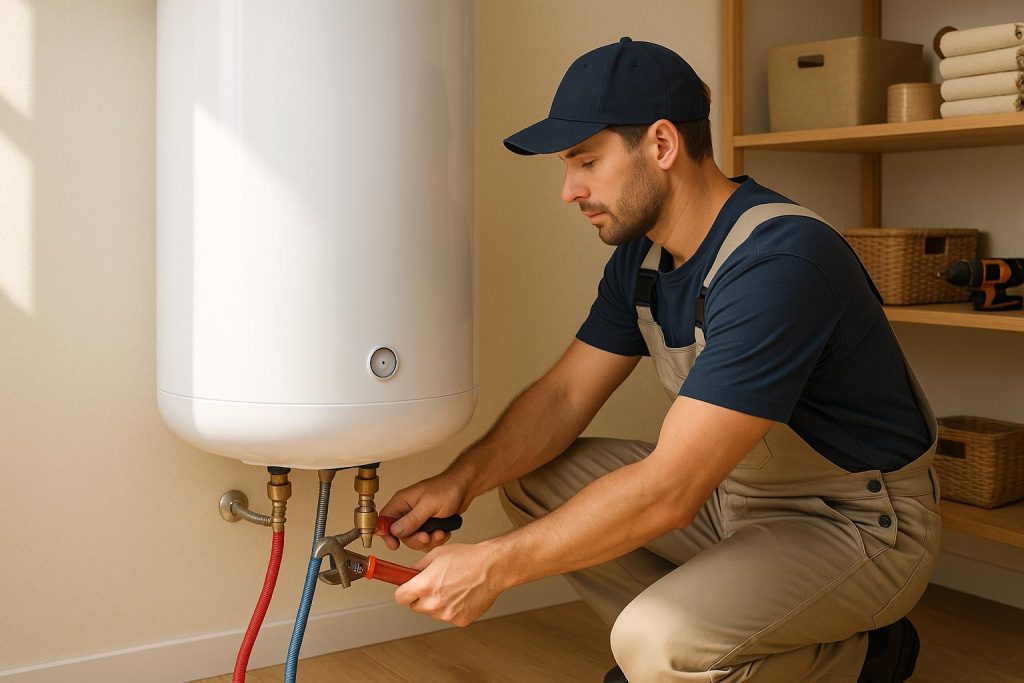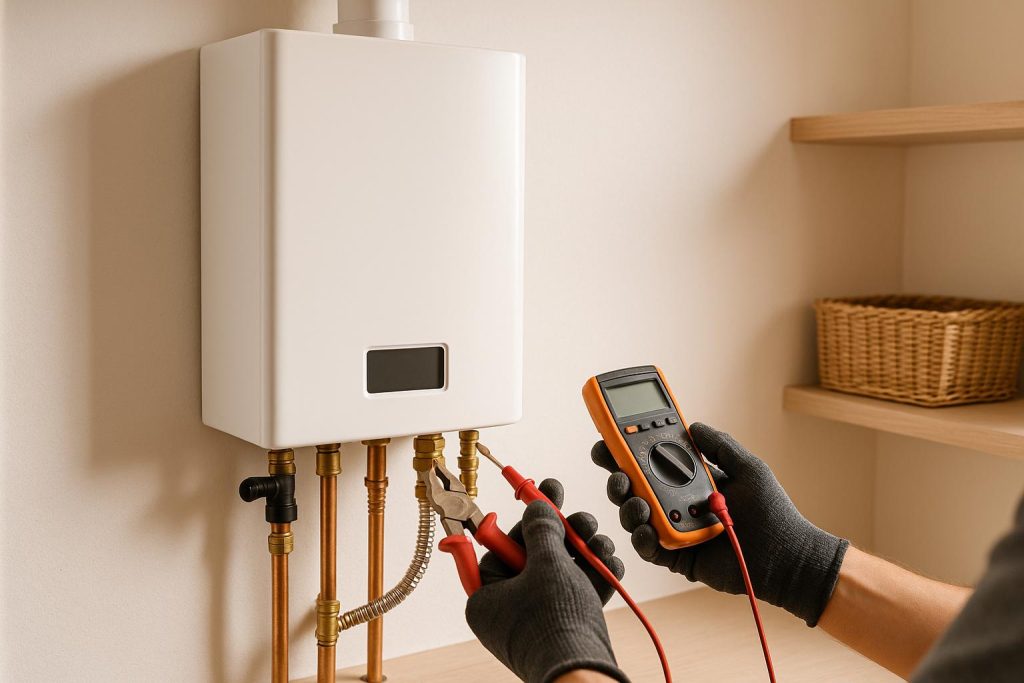
Changing your home’s AC filter is a simple yet important maintenance task that helps maintain indoor air quality and the efficiency of your cooling system. Here are easy steps to change your home’s AC filter:
- Gather Supplies: Collect the necessary supplies, including a replacement air filter that matches the size and type recommended for your HVAC system. Check the filter’s MERV rating if applicable.
- Locate the Air Filter: Find the location of your AC filter. Typically, it’s located in the return air duct near the air handler or furnace. You may need to remove a cover or access panel to access it.
- Turn Off the System: For safety, turn off your HVAC system. This prevents the fan from running during the filter replacement process.
- Remove the Old Filter: Carefully slide out the old filter from its slot. Pay attention to the direction of airflow indicated by any arrows or markings on the filter frame.
- Inspect the Filter Slot: Take a moment to inspect the filter slot for any dirt, debris, or buildup. If necessary, clean the area to ensure proper airflow.
- Install the New Filter: Insert the new filter into the slot, following the direction of airflow indicated on the filter. Ensure that it fits snugly and securely in the slot.
- Secure Any Fasteners: If your filter slot has fasteners or clips, make sure to secure them to hold the filter in place.
- Turn On the System: After successfully installing the new filter, you can turn your HVAC system back on. The clean filter will now help circulate clean, filtered air throughout your home.
- Set a Reminder: To maintain a regular filter replacement schedule, consider setting a reminder or marking the date on a calendar. Most filters should be replaced every 1 to 3 months, but it can vary depending on factors like filter type and indoor air quality.
- Dispose of the Old Filter: Properly dispose of the old filter. If it’s a disposable filter, it can typically be thrown away with regular household trash. Some filters may be recyclable, so check local recycling guidelines.
Can You Change Your Own AC Filter?
Yes! You can easily change your own AC filter. You however need to first locate the filter and make sure that you have bought a replacement that is the correct size. Also, you need to ensure that you install it the right way (airflow arrow pointing towards the air handler/furnace).
To change an AC filter, start by locating it and then turn off the unit. Remove the grill or slot cover and simply slide the old filter out. Replace the filter with another one of the same size, making sure that the airflow arrow is pointing towards the air handler. Put back the cover and turn on the unit.
As I have mentioned, in order to change the AC filter you first need to locate the filter. This is one area that most folks struggle with.
You AC air filter will be located in a slot inside the return air duct just before where it is connected to the air handler or furnace. Alternatively, it could be located behind the return air grill on the ceiling, wall or utility closet.
So, what happens if an AC air filter is put in backwards?
If your AC air filter is installed backwards, the return air will have a hard time flowing through it. As a result, the air handler/furnace fan will be forced to work extra hard to force the air through the filter. That will not only increase your utility bills but it will also reduce the unit’s lifespan.
How Often Should You Change Air Filter in an AC?
An AC air filter should be changed quarterly (once in every 3 months). However, if you have a newly constructed or remodeled house, there will be lots of dust indoors and you should change it after every month until most of the dirt has been filtered out.
Although the general rule is to change your AC filter after every 3 months, you state of health could also dictate how often you should do it. For people who suffer light to moderate allergies, I would recommend changing the filter monthly.
The air quality in your home should also guide you on the frequency to change the AC filter. A house that attracts lots of dust or pollen or a house with people who smoke will need the AC filter replaced more frequently.
The number of pets in the house will also determine how often you need to change the AC filter. The more pets you have the more likely is the AC filter to get clogged by fur and the more frequent you will need to replace it.
Needless to say, the number of people of people living in a house will also dictate how often the AC filter will need to be replaced. The more people you have in a house the more dirt they bring indoors and the more it clogs the filter necessitating a replacement.
One thing I would advise you to do is to inspect the filter monthly. If it looks good you can use it for another month otherwise have it replaced.
Why You Need to Replace Your AC Filter
You air conditioner pulls hot air from the house for cooling and also pulls in outdoor air for ventilation. Both the outdoor and indoor air contains impurities that needs to be removed before the air can be cooled and supplied back to the house.
And that is why we have an AC air filter in the first place. Central air conditioners have a 2 sets of air ducts. These are supply and return air ducts.
Return air ducts carry air from the house to the air handler or furnace while supply air ducts carry air conditioned or heated air from the air handler or furnace. The return air combines with the ventilation air before the air mixture enters the unit.

Before the return and ventilation air is cooled/heated, it is passed through the air filter where all the impurities are removed. After continued use, the filter will be filled with enough impurities and will need to be changed.
Failure to replace the AC filter will have it clogged to the point that it restricts the flow of air from the return air duct to the unit. As such, the HVAC system will be forced to work harder to cool/heat the air which is inefficient.
The harder your HVAC system works, the more energy it consumes since it will hardly shut off as it tries to have air circulating through the system. You will therefore notice an increase in your energy bill.
Failing to change the filter will also reduce your air conditioner’s lifespan. The longer the components keep running and the harder the unit works, the more it is subjected to wear and tear due to friction.
Where is Your AC Filter Located?
AC filters are always located somewhere in the return air duct. The reason for that is because you want to remove the impurities before the return air gets to the air handler/furnace.
There are therefore 2 areas where you should look for your AC filter:
- Behind the return air grill
- Just before the return air duct enters the air handler/furnace
1. Behind the Return Air Grill

The return air grill is the opening on the ceiling, wall or utility close through which the air handler or furnace fan pulls air from the house. You will have return and supply air grills in your house.
Return air grills are bigger in size compared to supply air grills. Just to be sure which is which, turn on your AC and place your fan on the grill. If there is suction on your palm then that is indeed the return air grill.
Note: A house can have more than one AC filters. If there a several return air grills in the house, each will have an air filter.
2. Near the Air Handler/Furnace

To start with, there are 2 types of HVAC units depending on how they are installed. That also affects the location of the filters. They are:
- Vertical HVAC units
- Horizontal HVAC Units
Horizontal AC units are found in large basements, attics or crawlspaces while vertical AC units are installed in homes that have tiny basements, attics or crawlspaces. AC units could also be installed in utility closets.
In a horizontal AC unit, the return air duct is connected to the air handler/furnace from the left-hand side while the supply air duct exits from the right-hand side. The air filter in this case will be located in a slot on the left side of the unit just before the blower.
In a vertical AC unit, the return air enters the unit from the bottom while the supply air exits from the top. As such the AC filter will be located inside a slot just before where the air duct connects to the air handler/furnace.
How to Change an AC Filter
Follow the following steps to change your AC filter:
- Turn off the unit. As you can imagine, the filter will already be full of dust. Trying to remove it while the unit is running will result in the dust being sucked inside the unit, which is what you have been avoiding all that time.
- If the filter is just behind the return air grill, pull the tabs on the grill to remove it and simply pull out the filter. Insert the new filter making sure that the airflow arrow is pointing away from the house and towards the air handler or furnace. Put back the grill.
- If the filter is located near the air handler/furnace, remove the cover on the filter slot and simply slide out the filter. Put in the new filter making sure that the airflow arrow is pointing towards the air handler/furnace. Put back the cover.

It is always important to make sure that you buy the correct size of the filter. Filters have their sizes printed on them and therefore buying the right size should be easy.
The following are the most common AC filter sizes:
- 16 x 20 x 1 inches
- 20 x 25 x 1 inches
- 20 x 25 x 4 inches
Another thing that you need to be aware of when changing your AC filter is the MERV rating. The following is an example of filters with different MERV ratings and their effectiveness:
- 1-4: Removes less than 20% of air particulates.
- 5-8: Removes between 20% and 35% of air particulates.
- 9-12: Removes more than 50% of air particulates.
I would advise that you buy an air filter with a MERV rating of more 10 or higher.
Wrap Up
And basically that is how to change your AC air filter. I hope that this was a helpful guide and that you now don’t need to pay a technician to replace the AC filter for you.





